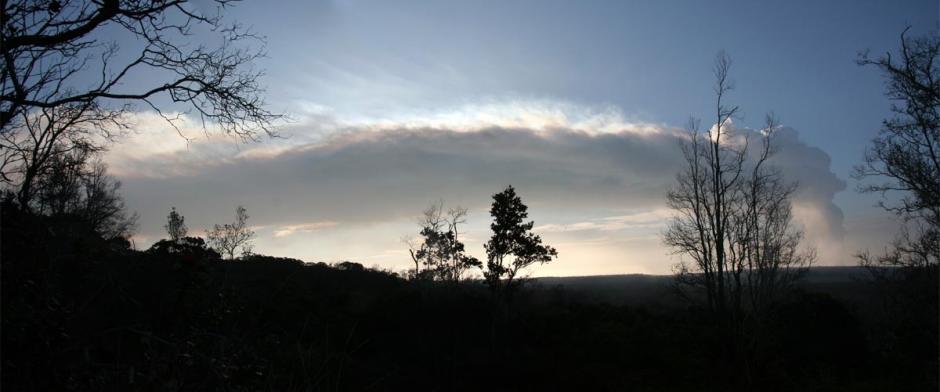Kilauea residents stay put; Volcano National Park still closed

Hawaii Volcanoes National Park remains closed. But residents living near Kilauea’s summit, for the most part, are still in their homes.
Most Volcano-area residents reacted to yesterday’s Big Island Civil Defense evacuation advisory by staying put. Weather forecasters feared winds might move through their communities through Thursday, carrying high levels of noxious sulfur dioxide fumes from eruptions at the Halemaumau vent on Kilauea’s summit and downslope Pu’u O’o vent.
The winds arrived, all right. But at a higher elevation, keeping sulfur dioxide from Kilauea’s steam and ash eruptions largely above residential areas. Instead, communities as far north as Hilo—40 miles away—woke up to a thick layer of “vog” (or “volcanic smog”) yesterday, which tradewinds dissipated by mid-morning.
Easterly tradewinds are now expected to blow fumes away from residential areas and out to the ocean, beginning this evening through the weekend. Until then, civil defense officials are advising Volcano residents to watch for shifts in wind elevations that could still bring sulfur dioxide-laced air.
Yesterday’s only mandatory Kilauea-area evacuees were a couple thousand Hawaii Volcanoes National Park visitors and campers, non-emergency employees, residents of Kilauea Military Camp and Volcano House hotel guests. The entire 500 square-mile park was closed Tuesday afternoon because of high levels of sulfur dioxide fumes at Kilauea’s summit. A date for reopening it to the public has not been set.
“The park will reopen when favorable winds return and sulfur dioxide levels diminish in the area,” park officials wrote today in a statement.
Overall, evacuation at Kilauea was so low-key, only six people ended up overnight at a Hilo shelter.


